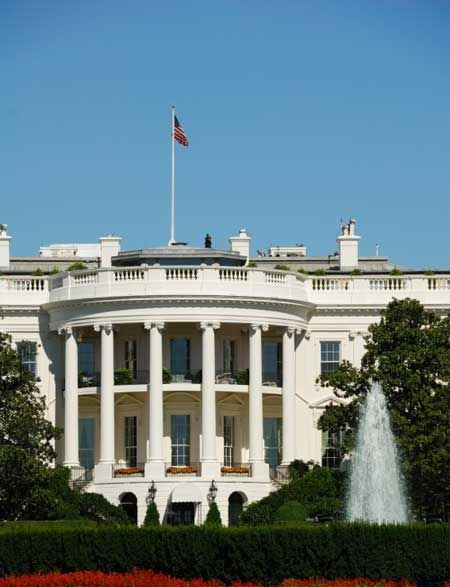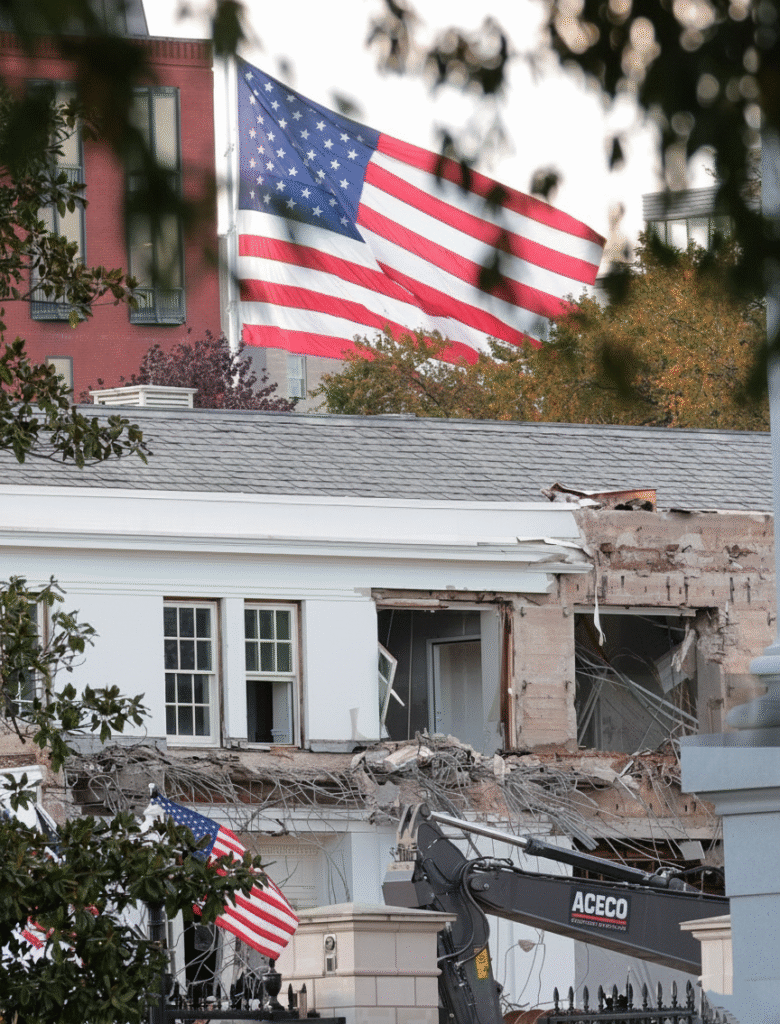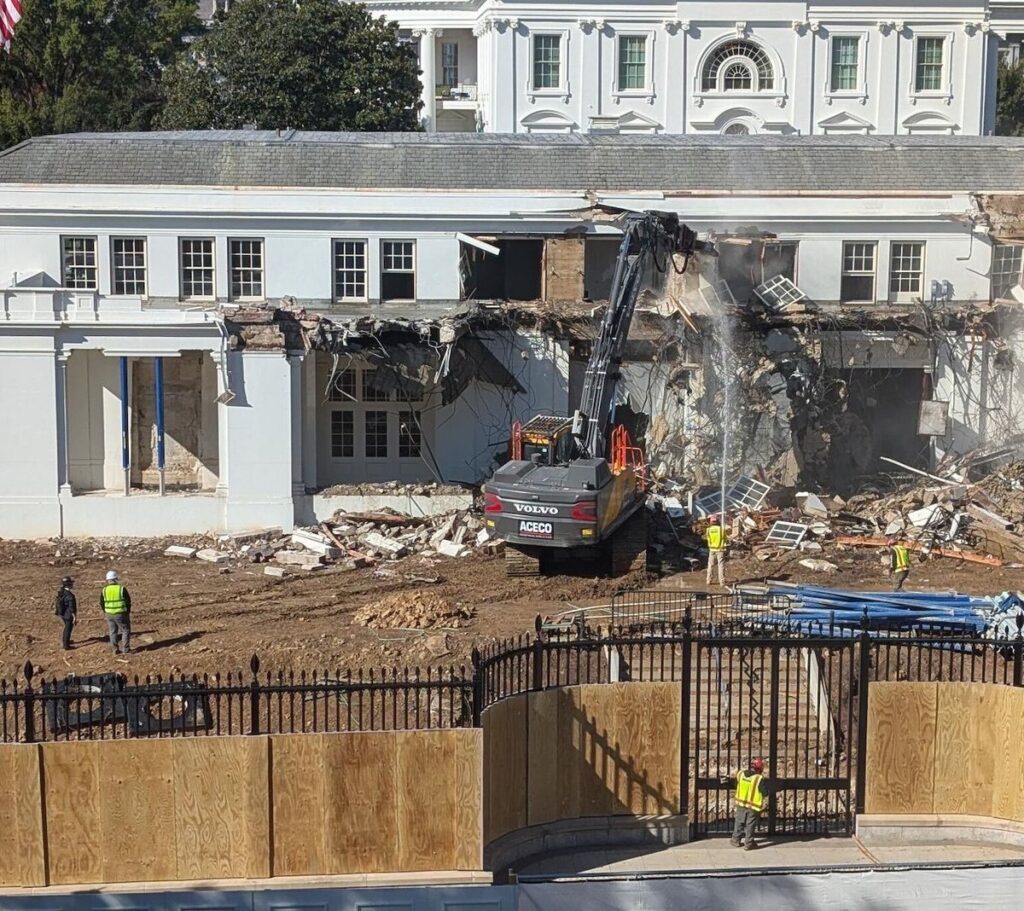A Controversial Beginning
On October 20, 2025, the White House officially began demolishing part of the East Wing, the historic area traditionally used by the First Lady, to make space for President Donald Trump’s ambitious $250 million ballroom project.
While the White House maintains that demolition activities do not require approval from the National Capital Planning Commission (NCPC)—the federal agency overseeing construction and modifications in Washington, D.C.—critics argue that such a massive project bypasses crucial regulatory oversight.
The announcement sparked immediate controversy in Washington, highlighting tensions between historical preservation, executive power, and modern development. Lawmakers, historians, and activists have raised questions about transparency, legality, and the potential impact on the historic White House grounds.
The Vision: Trump’s $250 Million Ballroom
The proposed ballroom is planned as a 90,000-square-foot neoclassical structure adjacent to the East Wing, designed to accommodate up to 999 guests. It is envisioned as a luxurious, state-of-the-art facility featuring:
- Bulletproof glass walls
- Grand chandeliers
- Ornate columns and gold-accented interiors
- High-tech climate control systems
According to sources, the project is privately funded, with major corporate donors pledging significant contributions. For example, Carrier, a well-known HVAC manufacturer, has committed to supplying advanced air conditioning systems for the ballroom.
The White House argues that this new addition is necessary to host large-scale state events, international dignitaries, and major ceremonies that the existing East Wing cannot accommodate.
Controversy Over Federal Approval
A central point of debate revolves around whether the demolition and construction should have received NCPC approval.
White House Position: The administration claims that demolition is considered site preparation and does not fall under NCPC jurisdiction, meaning they are legally allowed to proceed without federal approval.
Critics’ Position: Historians, preservationists, and Democratic lawmakers argue that demolishing part of the historic East Wing, which dates back to 1902, is a precedent-setting move. They contend that any large-scale modification to a federal landmark, especially one with national historic significance, should undergo comprehensive review and oversight.
Democratic Representative Alexandra Morales stated, “The White House is prioritizing luxury over preservation. The East Wing is not just a workspace; it’s a symbol of history and American heritage. Skipping oversight sets a dangerous precedent.”
Political Reactions: Divided Opinions
The East Wing demolition has ignited fierce debate among politicians, media, and the public:
- Democratic Criticism: Lawmakers and public advocates have criticized the project as a misuse of funds and a violation of trust. They argue that historical buildings should not be altered for private luxury, regardless of funding sources.
- White House Defense: The administration emphasizes that the ballroom is a necessary modernization to host events of national and international significance. President Trump remarked, “This ballroom will elevate the prestige of the White House, allowing us to host world leaders and state ceremonies at a scale we’ve never seen before.”
- Public Reaction: Social media users have expressed mixed opinions. Some criticize the project as lavish and unnecessary, while others defend it as a step towards modernization.
Security and Transparency Concerns
Another layer of controversy involves security protocols and restrictions on public information:
The U.S. Treasury Department instructed employees not to share photos of the construction site.
Employees with offices overlooking the East Wing were warned that circulating images without clearance could violate security protocols.
This move has raised concerns about government transparency. While security is a legitimate concern, critics argue that the public has a right to be informed about significant modifications to a national landmark.
Security expert Dr. Henry Collins commented, “There is a delicate balance between security and public accountability. Completely restricting photos and information can erode public trust, especially for projects funded by private donations but affecting a historic federal building.”
Historical Context: The East Wing Legacy
The East Wing of the White House has served as the First Lady’s operational base for over a century. Key historical highlights include:
- 1902: Construction as part of Theodore Roosevelt’s renovation
- 1930s: Modernized during Franklin D. Roosevelt’s presidency
- Significant Role: Hosted social events, official ceremonies, and administrative offices for the First Lady
Demolition of this historic wing represents a major alteration to a national symbol, raising questions about how much modernization should be allowed at iconic landmarks. Preservationists worry that future presidents might use this as a precedent to further alter historical structures without oversight.
Financial Considerations
The $250 million project has also attracted scrutiny regarding finances:
All funds are private donations, with no taxpayer money used.
Corporate sponsors, including real estate, HVAC, and construction companies, have pledged resources.
Critics argue that even privately funded projects must adhere to federal preservation guidelines to protect historical integrity.
Financial analysts note that ballrooms of this scale are extremely rare in government buildings, and questions arise about whether the investment is justified.
Implications for Executive Authority
This controversy is also a debate about executive power:
The White House maintains that the President has authority over on-site changes that do not involve creating entirely new structures requiring NCPC approval.
Legal scholars argue that the scale of demolition and reconstruction effectively constitutes new construction, and bypassing oversight could weaken checks on executive authority.
Constitutional law expert Dr. Laura Kim notes, “This case highlights a gray area in federal law. While the White House may be technically compliant, it raises questions about the limits of presidential authority in modifying historic government property.”
Potential Precedent and Long-Term Impact
If completed, Trump’s ballroom will:
- Serve as a state-of-the-art venue for national and international events
- Set a historical precedent for future renovations
- Influence discussions on balancing modernization with preservation
Preservation groups are considering legal action or public advocacy campaigns to ensure future projects undergo stricter oversight.
Modernization vs. Preservation
The East Wing demolition at the White House highlights the delicate balance between modernization, security, historical preservation, and transparency.
Proponents argue it enhances the White House’s capabilities and international prestige.
Critics warn that bypassing approval could erode historical legacy and set a dangerous precedent for federal landmarks.
As construction progresses, all eyes are on Washington, D.C., to see how this high-profile project unfolds and whether it will withstand scrutiny from lawmakers, historians, and the public.
This episode underscores a broader question: How do we modernize iconic government institutions without sacrificing history and transparency?
Related News: Read More





